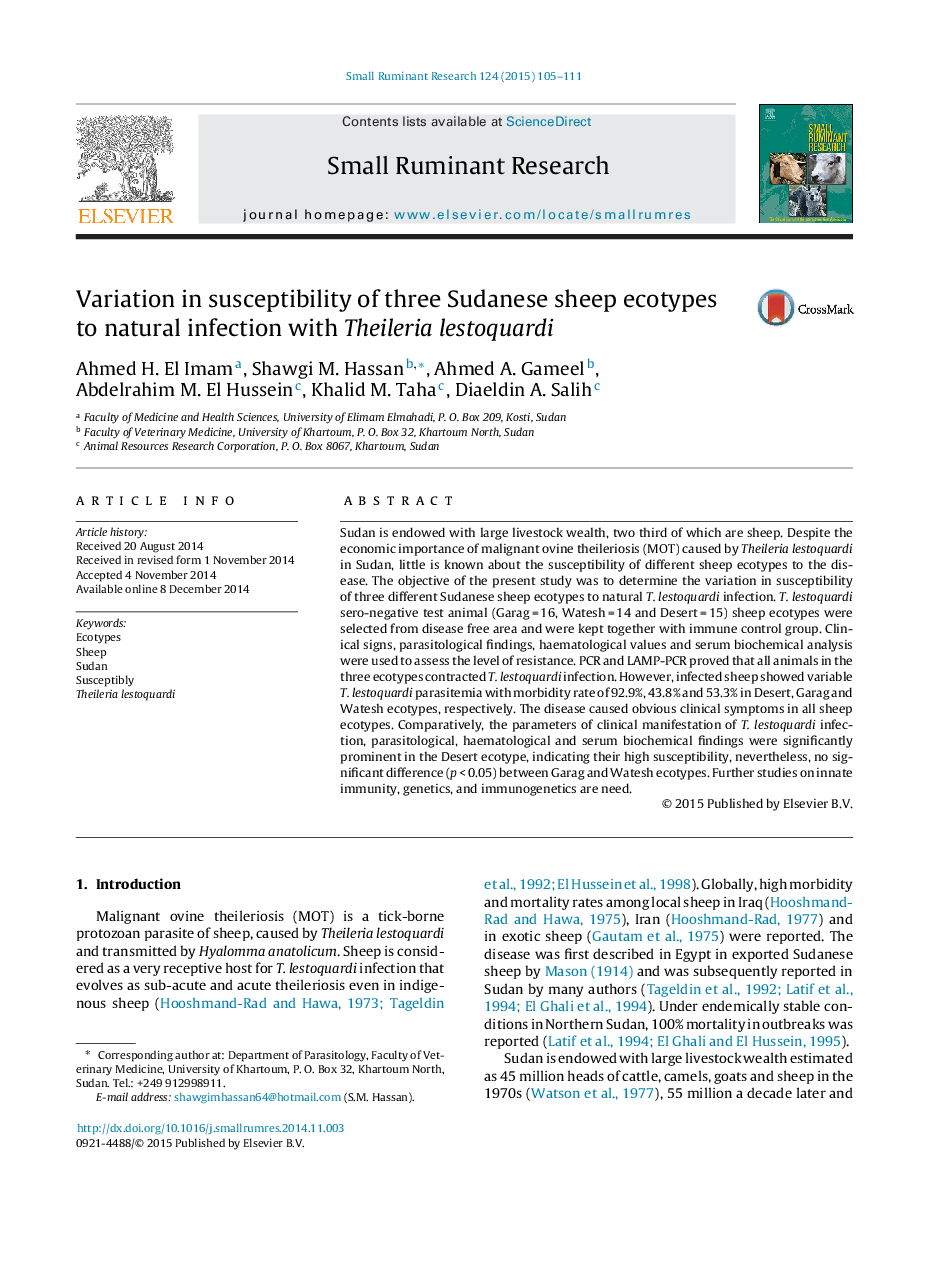| Article ID | Journal | Published Year | Pages | File Type |
|---|---|---|---|---|
| 5795622 | Small Ruminant Research | 2015 | 7 Pages |
Abstract
Sudan is endowed with large livestock wealth, two third of which are sheep. Despite the economic importance of malignant ovine theileriosis (MOT) caused by Theileria lestoquardi in Sudan, little is known about the susceptibility of different sheep ecotypes to the disease. The objective of the present study was to determine the variation in susceptibility of three different Sudanese sheep ecotypes to natural T. lestoquardi infection. T. lestoquardi sero-negative test animal (Garag = 16, Watesh = 14 and Desert = 15) sheep ecotypes were selected from disease free area and were kept together with immune control group. Clinical signs, parasitological findings, haematological values and serum biochemical analysis were used to assess the level of resistance. PCR and LAMP-PCR proved that all animals in the three ecotypes contracted T. lestoquardi infection. However, infected sheep showed variable T. lestoquardi parasitemia with morbidity rate of 92.9%, 43.8% and 53.3% in Desert, Garag and Watesh ecotypes, respectively. The disease caused obvious clinical symptoms in all sheep ecotypes. Comparatively, the parameters of clinical manifestation of T. lestoquardi infection, parasitological, haematological and serum biochemical findings were significantly prominent in the Desert ecotype, indicating their high susceptibility, nevertheless, no significant difference (p < 0.05) between Garag and Watesh ecotypes. Further studies on innate immunity, genetics, and immunogenetics are need.
Related Topics
Life Sciences
Agricultural and Biological Sciences
Animal Science and Zoology
Authors
Ahmed H. El Imam, Shawgi M. Hassan, Ahmed A. Gameel, Abdelrahim M. El Hussein, Khalid M. Taha, Diaeldin A. Salih,
